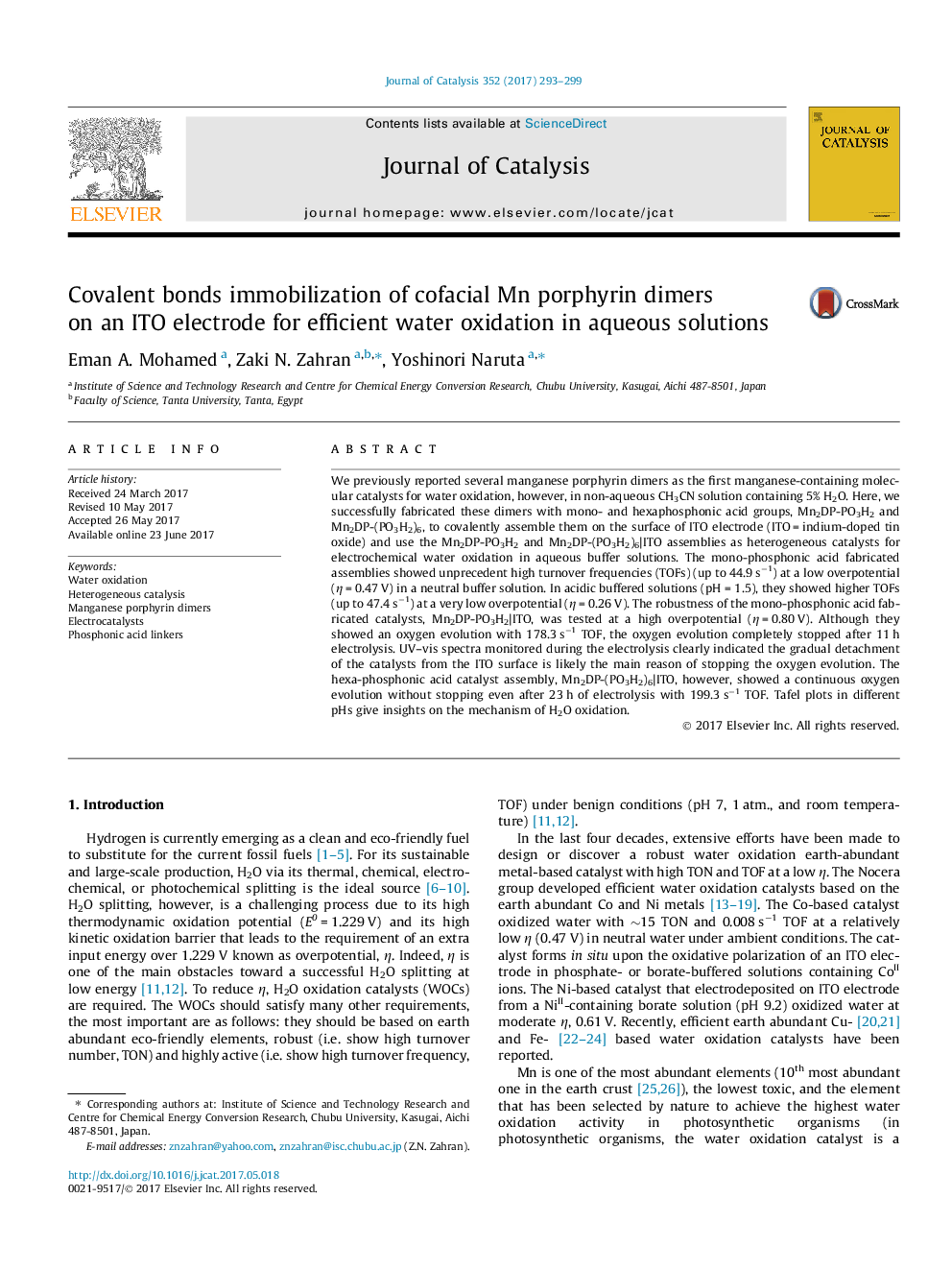| کد مقاله | کد نشریه | سال انتشار | مقاله انگلیسی | نسخه تمام متن |
|---|---|---|---|---|
| 6455395 | 1419757 | 2017 | 7 صفحه PDF | دانلود رایگان |

- Mn porphyrin dimers were fabricated with mono- and hexa-phosphonic acid linkers.
- The fabricated dimers were immobilized on ITO for heterogeneous water oxidation.
- The ITO/monophosphonic dimers are unstable for water oxidation at high potentials.
- The ITO/hexaphosphonic dimers showed high water oxidation activity and stability.
We previously reported several manganese porphyrin dimers as the first manganese-containing molecular catalysts for water oxidation, however, in non-aqueous CH3CN solution containing 5% H2O. Here, we successfully fabricated these dimers with mono- and hexaphosphonic acid groups, Mn2DP-PO3H2 and Mn2DP-(PO3H2)6, to covalently assemble them on the surface of ITO electrode (ITO = indium-doped tin oxide) and use the Mn2DP-PO3H2 and Mn2DP-(PO3H2)6|ITO assemblies as heterogeneous catalysts for electrochemical water oxidation in aqueous buffer solutions. The mono-phosphonic acid fabricated assemblies showed unprecedent high turnover frequencies (TOFs) (up to 44.9 sâ1) at a low overpotential (η = 0.47 V) in a neutral buffer solution. In acidic buffered solutions (pH = 1.5), they showed higher TOFs (up to 47.4 sâ1) at a very low overpotential (η = 0.26 V). The robustness of the mono-phosphonic acid fabricated catalysts, Mn2DP-PO3H2|ITO, was tested at a high overpotential (η = 0.80 V). Although they showed an oxygen evolution with 178.3 sâ1 TOF, the oxygen evolution completely stopped after 11 h electrolysis. UV-vis spectra monitored during the electrolysis clearly indicated the gradual detachment of the catalysts from the ITO surface is likely the main reason of stopping the oxygen evolution. The hexa-phosphonic acid catalyst assembly, Mn2DP-(PO3H2)6|ITO, however, showed a continuous oxygen evolution without stopping even after 23 h of electrolysis with 199.3 sâ1 TOF. Tafel plots in different pHs give insights on the mechanism of H2O oxidation.
57
Journal: Journal of Catalysis - Volume 352, August 2017, Pages 293-299